The Scientific Tale Of Author Beatrix Potter
17:11 minutes
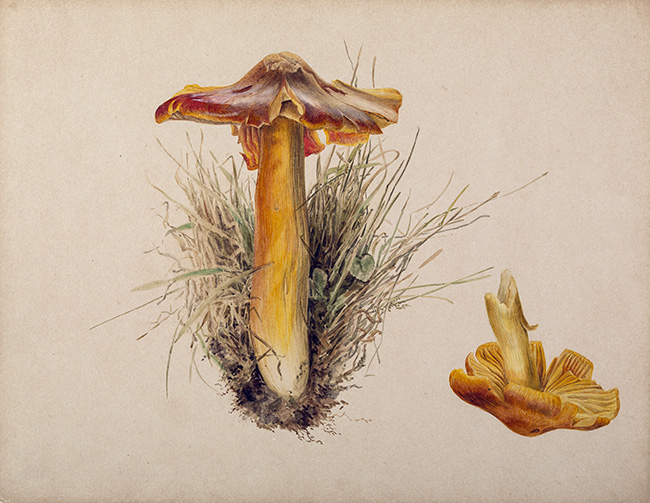
Beatrix Potter is best known for her tales and illustrations of Flopsy, Mopsy, Cotton-tail, and Peter Rabbit, who pestered a certain farmer by digging up his onions. Outside of Mr. McGregor’s garden and in her own life, Potter had a curious eye for the natural world around her. She collected hedgehogs, bats, and other animals, creating detailed illustrations of her “pets.” But one topic in particular captured her attention: fungi. Author and historian Linda Lear discusses the scientific illustrations and endeavors of Potter.
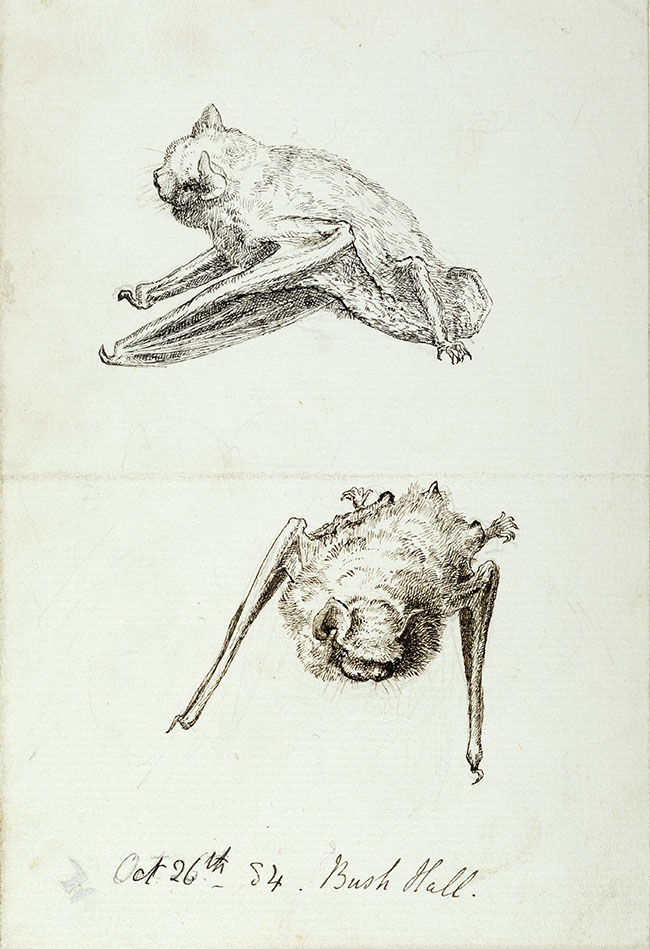
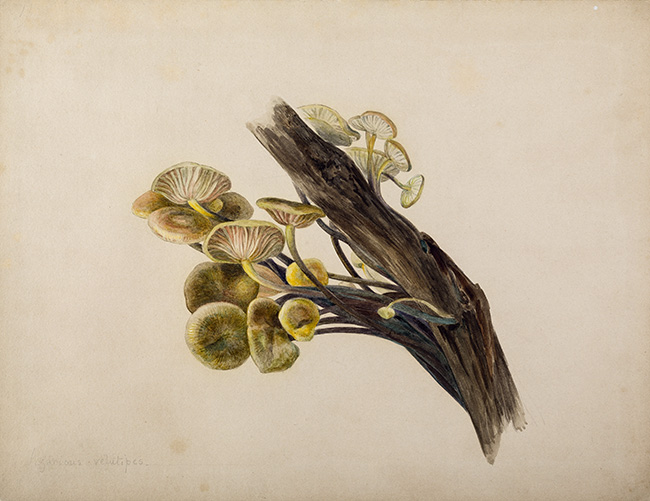
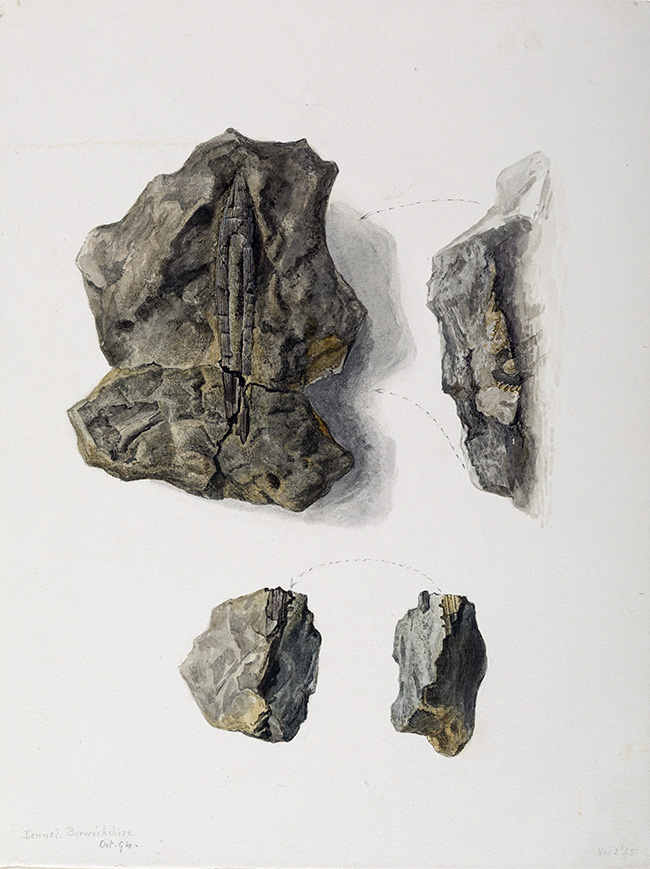
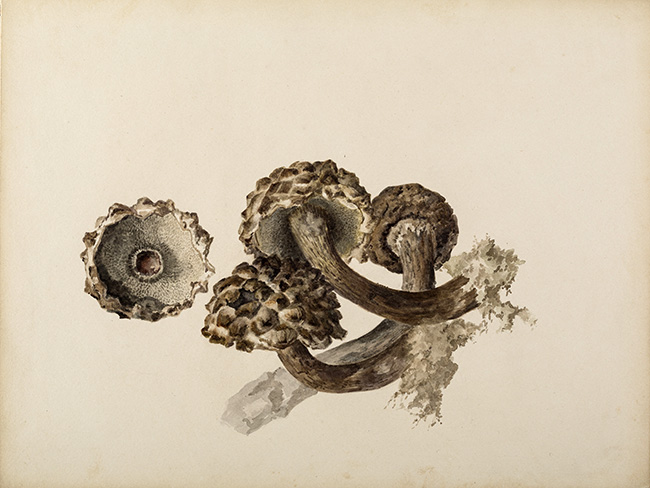
Linda Lear is a historian and author of books including Beatrix Potter: A Life in Nature (St. Martin’s Press, 2007). She’s based in Bethesda, Maryland.
IRA FLATOW: This is Science Friday. I’m Ira Flatow. You know the tale of the four little rabbits, Flopsy, Mopsy, Cottontail, and of course, Peter? Author Beatrix Potter imagined and illustrated the world of the bunny in the blue coat, where he pulled up onions, tried to keep from being baked into a pie.
Outside of Mr. McGregor’s garden and in her own life, Beatrix Potter had a curious eye for the natural world around her. The idea of Peter Rabbit actually came from sketches and observations of her own pet rabbit, Benjamin Bouncer. She also kept hedgehogs, bats, and frogs, and developed a scientific interest in fungi, mushrooms.
My next guest is here to tell us about Beatrix Potter’s scientific tales. Linda Lear is author of “Beatrix Potter– A Life in Nature,” and a contributor on the new book out called “The Art of Beatrix Potter.” Welcome to Science Friday.
LINDA LEAR: Thank you, Ira. Happy to be here.
IRA FLATOW: Nice to have you. Just a note to our listeners that we’re not taking calls today, but you can comment on Twitter @SciFri or at sciencefriday.com. You know, Linda, most people don’t think of Beatrix Potter outside of rabbits. How did you come to her other illustrations?
LINDA LEAR: I’ve discovered Beatrix Potter when I was in the science museum in London and came across these incredible fungi drawings in the lobby. And in somewhat typical fashion, there were no labels on them. So as I inquired, I found out that they were by Beatrix Potter. I had no idea.
IRA FLATOW: Yeah, they’re amazing drawings. What struck you about them the most?
LINDA LEAR: Well, they’re beautiful watercolor. They’re incredibly detailed. They’re scientifically so accurate that now all these years later, most of them were done in the 1890s. And all these years later, scientists still go up to the Armitt Museum in Cumbria to look at her drawings to identify fungi.
IRA FLATOW: Was that the same period of time in history where we saw all these great detailed drawings of flowers and plants, things like that in nature?
LINDA LEAR: The Victorian passion for natural history was ubiquitous, especially in the upper middle classes and upper class. So her father, for example, had a wonderful library of books on nature and all sorts of the sciences. Her uncle, Roscoe, was a royal fellow and a chemist who invented the Bunsen burner. So she had some science in her background but it was a passionate thing. Everybody was drawing flowers or drawing bugs or drawing rabbits.
IRA FLATOW: Now, you’ve also written a biography of Rachel Carson, who helped start the environmental movement. What is there about both of these women that may be similar or captured your interests?
LINDA LEAR: Interesting question, thank you. Both of them were Victorian rebels. Both of them grew up with a lot of restrictions, and both of them sort of dared to break the envelope– very cautiously, but nevertheless rebelliously.
IRA FLATOW: Yeah, how did Beatrix Potter break the envelope?
LINDA LEAR: Well, she was born into a very, very well-to-do Unitarian family in 1866 and she a younger brother. She was educated at home, was not allowed no friends. And the family, while they were well-to-do, they were socially ostracized because of their faith in Unitarianism, which was not a popular faith at the time, although always very scientific.
And so she had to devise things to keep her occupied. I think the great nemesis of Victorian women was the problem of boredom. So Beatrix Potter early on started drawing and loved drawing. And as you said in your beginning, she started drawing animals in her school room– she and her brother.
IRA FLATOW: So this is way before she did the children’s book series.
LINDA LEAR: Way before– this is almost– as a 8– 10-year-old she was drawing beautifully. She had to take drawing lessons because her parents forced them on her, but she hoped that they would be over soon and that they wouldn’t corrupt her own style.
IRA FLATOW: She and her brother had quite the collection of pets that were the basis of many of her drawings, right?
LINDA LEAR: Yes, I don’t think her mother ever came up to the third-floor nursery or certainly didn’t come very often. And she had some snakes and some unsavory things that I don’t think her mother would have approved of. But they drew them. And then when the animals died, especially the rabbits and the hedgehogs and the things that they really liked to draw, they would boil the skeletons and then reassociate the bones so that they could be anatomically correct. So if you look at her rabbits, you’ll see that she knows every muscle.
IRA FLATOW: Talking with Linda Lear, author of “Beatrix Potter– A Life in Nature,” and also a contributor to “The Art of Beatrix Potter– Sketches, Paintings, and illustrations.” And I want to go to one illustration, one beautiful sketch in the book about the spiders. I, mean I’m looking at an illustration of a jumping spider, and it’s very technical. I mean, all the tiny little hairs, the details. How was she able to observe these details and get them so accurate?
LINDA LEAR: Well, she hung out a lot at the natural science museum, which was a place that she was allowed to go as a single woman, and went often, and spent hours, got to know the curators, and drew on site the specimens that they had. And this was one of them. It’s a quite remarkable drawing because of the detail, and this is in watercolor.
IRA FLATOW: There’s another illustration of fossils and hand tools, which, they sound dull, but it’s really appealing how she captures this.
LINDA LEAR: It’s very appealing. This is the advantage she had in travel when the family moved from their house in London to go to a country house or to go away so that the clean spring cleaning could happen. One of the fossils is interesting.
I think she almost got interested enough in geology that she could have pursued it. But then again, there was no money in it, and how could a woman really get anywhere except be an associate, assistant, the lower-level person at the British Museum? So that didn’t appeal.
But these fossils are three-dimensional. She’s captured the nooks and crannies and all in watercolor, again. They leap off the page. It’s just extraordinary.
IRA FLATOW: They are. And you know, when you look at it, because they are three-dimensional, I got the feeling that she wasn’t just trying to be an artist here, but she was trying to be a scientist.
LINDA LEAR: Absolutely. She was trying to be a scientist and use her art to further the science. She got a commission from the Morley College for men to draw specimens of bugs, insects, for their classes. This she did very well and it was a donation, if you will.
She was being a good upper-class woman by saying that she would give these drawings to the college so that they could have them in their science classes. But she was that good. Then we have fungi, which did become a huge passion for her.
First, her interest in fungi was imaginary. She loved to watch fungi bloom. She loved their colors.
She talked about– made up a rhyme about [? nid nid ?] [? noddy ?] lying in a row, and how the wind would blow, and their little leaves and heads would shake. She illustrated lots of fungi as a fantasy kind of thing. Then she got interested because of a Scotsman in Perthshire, where they vacationed in the summer, who was a naturalist.
His name was Charles McIntosh and he was quite a wonderful naturalist. But he only had one hand. He could do microscopic work, but he could not draw. So they made a deal that he would teach her about fungi and about their various parts of the fungus, and she would draw the fungus for him and send it to him. When he sent her live samples, she would send them back to Perth.
IRA FLATOW: She has an illustration– going back to that mushroom because you brought it up and it is such a wonderful drawing of a crimson wax-capped mushroom. And she shows the details of the underside of the cap, but she also has the grass growing at the base of mushroom.
LINDA LEAR: Right. She put it in the ground and she also showed the underside and the stem. And this was Charles McIntosh. He taught her how to dissect the mushroom, how to show its gills, and how to show where it was planted and the kind of condition it might grow in.
IRA FLATOW: And she wasn’t just drawing these mushrooms, but actually coming up with scientific ideas about them.
LINDA LEAR: Yes, she was. She really was interested in how spores germinate and she had a theory. It turns out it wasn’t symbiosis, but it was close. It was part of the theories that were hot during the 1890s and that was the subject of the paper that she wrote for the Linnean Society.
IRA FLATOW: Talk a little bit more about the Linnean Society of London and how her uncle helped her get in there.
LINDA LEAR: Well, it’s a story of scientific jealousy, actually. The director of Kew Gardens, Sir Thiselton-Dyer, if you will, had dismissed Beatrix when she got a ticket to do some research. Kew dismissed her theories and dismissed her drawings about how spores might germinate.
But one of the other scientists– botanist– at Kew took her seriously and some way– and her uncle, Sir Henry Roscoe, took offense that Thiselton-Dyer had mistreated his niece and been abrupt and surly. And so he encouraged Beatrix to write this paper, which she did and all the research in the family kitchen, which turned out, of course, to be a pretty bad place because the drawings got contaminated. She was encouraged by him to do it and she was interested enough to see it through. And then this other botanist from [INAUDIBLE] actually read the paper at a meeting because she couldn’t attend.
IRA FLATOW: Wow. I never realized about that about her. I guess most people never thought about that.
LINDA LEAR: No. No. Beatrix Potter could have been any sort of natural scientist she wanted to be. She was that smart, that dedicated, and that good a scholar. But the only science that did not entice her was astrology. She said that the stars gave her [INAUDIBLE], which means a headache.
IRA FLATOW: So what was it that stopped her from pursuing that interest?
LINDA LEAR: Money and sex, I guess I would say. Money in the sense that she was after a little money of her own to become independent and she found that by selling drawings as cards to a very fine printer in London, she could make a little money of her own, and that’s how she started illustrating small books or books for children. She sold some drawings in the 1890s and was very proud of herself.
Sex because she was a woman and she did give this incredible paper on the spores of a fungi that she was researching to the Linnean Society, but she couldn’t attend. No women were allowed. No women were allowed in. No women are members. But she did try to offer a scientific paper.
IRA FLATOW: That’s quite interesting. How did the idea for Peter Rabbit come about? How did that get published?
LINDA LEAR: Through this card dealer, actually– through her connections with cards. But she drew this letter– the first letter– was the letter to the little boy who was the son of her first governess– her very fond first governess. He was sick in bed and so she was trying to entertain him. And so she said I think I’ll tell you the tale of Peter Rabbit.
And she drew the letter and sent it off and he loved it. And she sent more. He had several brothers and sisters. She kept sending them letters.
She wrote letters to children of all sorts– illustrated letters. Her former governess, now friend, knew that Beatrix was trying to get a little money of her own and suggested that she take that letter and have it republished, which she did. At first, she was turned down by seven or eight publishers who I think didn’t like it mostly because it was not in color.
But she drew this little book and then she decided she’d just publish it herself. So we have self-publishing back in the 1890s. It did get published. It didn’t get picked up because she agreed to publish it, to redraw and color and after she printed her own copies, and then it went gangbusters.
IRA FLATOW: Quite interesting talking with Linda Lear, author of “Beatrix Potter– A Life in Nature” and a contributor to the “Art of Beatrix Potter” on Science Friday from PRI, Public Radio International. Did her views on nature inform the stories of Peter Rabbit or any of her other characters, do you think?
LINDA LEAR: Yes, she didn’t believe in evolution at the time. I mean, it was a very new thing, but she knew nature as being very rough and red in tooth and claw. So there are stories– most of her stories often have an element of danger in them, not just being put in a pie, but, you know, the badgers, and the foxes, and raiding houses. She’s always got something in there that’s a little bit dangerous and shows us that nature is unpredictable, that we aren’t in charge.
IRA FLATOW: Nature’s unforgiving.
LINDA LEAR: And unforgiving.
IRA FLATOW: Huh. What made her decide to sort of switch careers then?
LINDA LEAR: Well, no, she was looking always for something useful to do because, you know, women in Victorian times didn’t have useful jobs. So drawing and learning about the natural world was something that Victorians were very excited about. I mean, it’s the heyday of natural history.
And her father was also a photographer. Her mother was an artist. Her brother became an artist. So drawing the world around her was what she could do to keep from being so bored.
And so on vacations and travels with her family to the countryside, which they did do often, she drew what she saw. And that’s how the letters to children also started.
IRA FLATOW: After she was done with the illustrations and moved on to the children’s books, did she ever talk or think about, hey, maybe I’ll revisit doing these illustrations about nature again?
LINDA LEAR: No, I don’t think she ever did. She was, by that time, she was very busy being a farmer and a wife– and a sheep farmer and growing vegetables and thinking about how to finish another book before her eyesight went.
IRA FLATOW: One last question– do you think there were other women of the Victorian era who you came across during your research who might have gone into science also?
LINDA LEAR: Absolutely. Absolutely. And there are lots. Emma [INAUDIBLE] was one.
There’s a woman who did study shellfish is another. They were all in the same sort of group of highly industrious, bright, educated women who were terribly bored and had to find something to do.
IRA FLATOW: Well, maybe we can talk you into writing a book another book.
LINDA LEAR: Maybe.
IRA FLATOW: But we’re very, very happy to have your other books. Linda Leary, author of “Beatrix Potter– A Life in Nature” and a contributor on this new book out called “The Art of Beatrix Potter.” Wonderful illustrations– make a great holiday gift.
And you can see images of Beatrix Potter’s drawings on our website at sciencefriday.com/potter. Thank you for taking time to be with us today and happy holidays to you.
LINDA LEAR: Same to you, Ira. It’s been a pleasure.
IRA FLATOW: Me too. After the break, we’re going to look at a few of the ambitious architectural projects of New York City that never came to be. We’ll be right back after this short break.
Copyright © 2016 Science Friday Initiative. All rights reserved. Science Friday transcripts are produced on a tight deadline by 3Play Media. Fidelity to the original aired/published audio or video file might vary, and text might be updated or amended in the future. For the authoritative record of ScienceFriday’s programming, please visit the original aired/published recording. For terms of use and more information, visit our policies pages at http://www.sciencefriday.com/about/policies/
Alexa Lim was a senior producer for Science Friday. Her favorite stories involve space, sound, and strange animal discoveries.